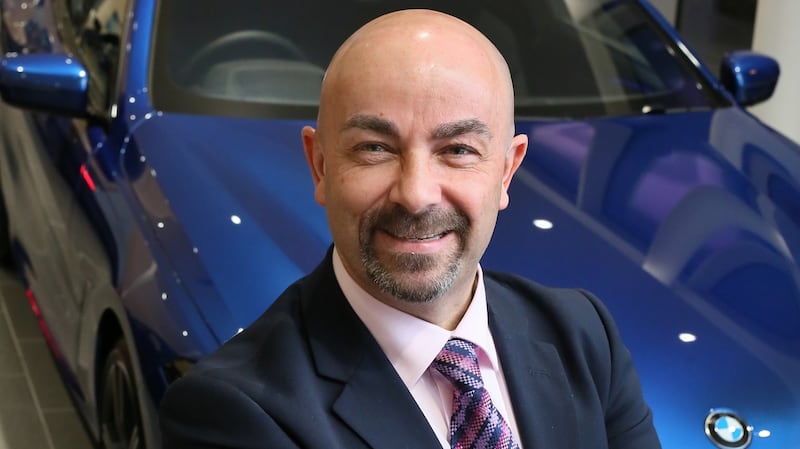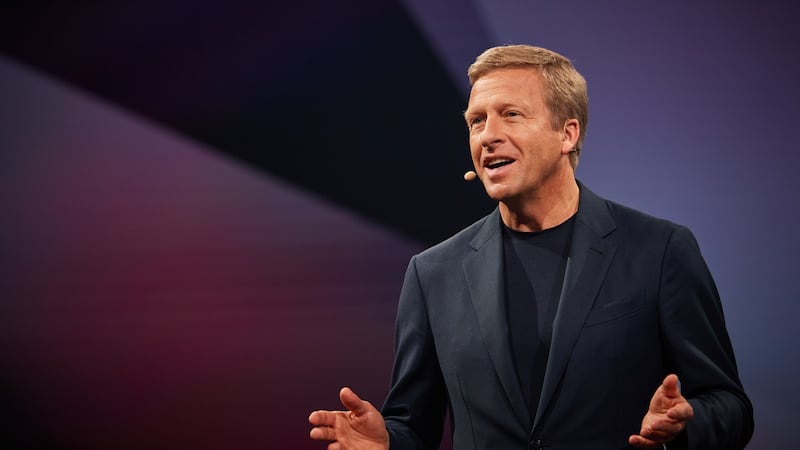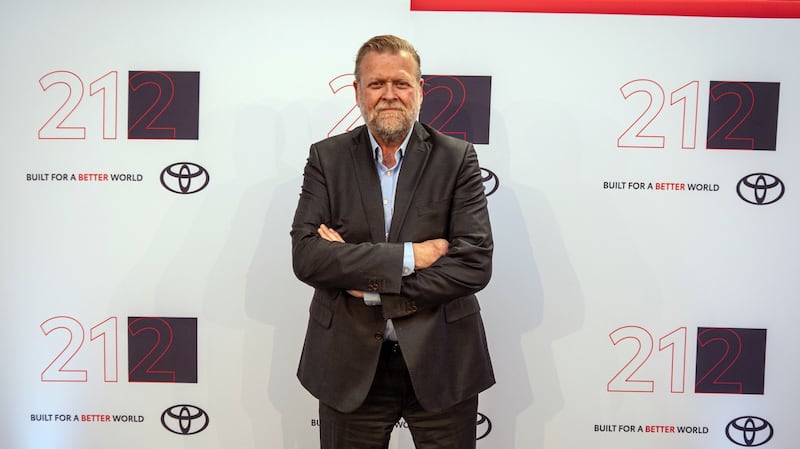For many decades, thanks to the ravages of vehicle registration tax (VRT), it was a depressing exercise for any car enthusiast to compare the prices of new cars in Ireland with the same models in the UK. Irish taxation on new cars meant that there was usually a significant gap in cost between one and the other, and the cheaper cars sure weren't on these shores.
If the conversion to electric motoring does nothing else it has at least temporarily broken that particular curse. In fact if you compare the base price of the Renault Zoe – one of Europe's most popular electric vehicles (EV) – then you will find that it is actually a fraction cheaper in Ireland – €27,550 compared to £27,595 (yes, I know that ignores the exchange rate, but it's the optics that count here).
Part of the equalisation of pricing is, of course, down to the generous incentives offered by the Irish Government to those buying a new EV – you get up to €5,000 knocked off the cost of your VRT, and another €5,000 in the form of a grant from the Sustainable Energy Authority of Ireland (SEAI), although there are maximum price-tag limits for those incentives.
The question must be, though, is it worth it? Is the massive promotion and subvention of the cost of electric cars actually going to succeed in bringing down Ireland’s CO2 emissions, and helping us and the wider world hold back the ravages of climate change?
And what happens when those incentives are withdrawn?
It’s easier to answer the last question first. It won’t matter much when the incentives are withdrawn because car-makers won’t be selling very many internal combustion vehicles by the time that happens. Most European car-makers are on course to sell a majority of electric vehicles between 2026 and 2030, so as and when an Irish government decides to take away that generous grant and rebate structure – which has just been confirmed as continuing through to the end of 2022 – it will be too late to turn back.
On the 'is it worth it' question, the answer seems to be a resounding yes, at least on a broad cost-benefit analysis
Those worried that, when such a day comes, EVs will still be too expensive to buy for many people might be somewhat mollified by the expectation, reported by Bloomberg, that the cost of producing – and therefore selling – an average family-sized car with electric power will fall to equal that of producing the same car with combustion power by around 2026 or 2027.
Mind you, that equation includes the equal expectation that punitive taxes on combustion cars will be ramped up at the same time, which won’t be pretty for those on lower incomes who can only afford to run older vehicles.
While there is currently consternation over proposals from the Tax Strategy Group to roll back more electric car incentives than was expected, beginning in the October budget, that will likely prove to be only a minor bump in the electric car road. After all, well before 2030 most car-makers won’t be offering much other than EVs for sale.
On the “is it worth it” question, the answer seems to be a resounding yes, at least on a broad cost-benefit analysis.
Since electric cars were first introduced in 2010, the SEAI has paid out some €74 million in grants to purchase both electric cars and the home charging points that go with them. In that same period there has been a distinct drop in the CO2 emissions of Irish cars.

According to the SEAI, for the period 2007 to 2017, CO2 emissions from new vehicles bought here decreased by 32 per cent. While much of that decrease is because of the 2008 en-masse switch to diesel vehicles (something of a historical mistake, as it turned out), the Irish car market is now switching significantly to hybrid, plugin-hybrid and electric cars.
Sales of all three categories have taken off in a big way since 2018, so that as of August a full 33 per cent of new cars sold in Ireland in 2021 have some form of battery assistance or be fully electric.
Are EVs well suited to Ireland's roads and the needs of Irish motorists? The answer is, sadly, not a simple yes or no
Last year, according to Green News, the Government had to purchase an estimated €150 million in carbon emissions credits, and pay another €125 million in fines to the EU for exceeding agreed CO2 limits. Added to which, the Green Party has calculated that air quality issues are costing an annual €2 billion in health-related costs and lower productivity due to lost workdays, quite apart from the moral issues of continuing to use combustion-engined cars that spew harmful emissions into the lungs of people walking the streets of Irish cities and towns.
The benefits should continue. Data from the European Environment Agency suggests that we can expect at least another 25 per cent decrease in vehicle CO2 emissions over the coming decade. That will go a long way towards meeting climate goals even if emissions from private passenger cars in Ireland account for only 10 per cent of our total CO2 budget.
On a more personal level, are EVs well suited to Ireland’s roads and the needs of Irish motorists? The answer is, sadly, not a simple yes or no. It’s probably more a yes, but with some qualifications and caveats.
In general most of us could move to an electric car tomorrow and feel no pain in doing so. Even the most affordable EV on the market, that Renault Zoe again, has a one-charge range approaching 400km. Drive it quickly on the motorway, with the air conditioning or heating on, and that will fall closer to 250km, but that’s still more than adequate for most daily needs.
Kevin Davidson, managing director of BMW Group Ireland, agrees that it is becoming easier to get people into electric and plug-in cars.
“Out of our new car registrations this year, 38 per cent account for electrified vehicles compared to 25 per cent in 2020. The figures have grown considerably which shows the market is adapting to the new technologies available,” Davidson told The Irish Times.
“We’re actually seeing deliveries of our electrified range across the country. Volumes are higher in urban areas. However, there has been an increase in adaption to electrified models in remoter areas. ‘Electromobility’ is a major growth driver for the BMW Group. We are following our ‘Power of choice’ strategy to take into account customer needs and legal requirements on the global automotive market.”
Both the ESB and private operators are laying plans to roll out more and faster chargers, but it's a chicken-and-egg scenario that really should not have been allowed to happen
One of the beauties of electric motoring is that you fill up at home, but that comes with its own caveats. You will need a driveway or a garage or some other form of off-street parking if you are going to do the most environmentally and cost-efficient thing, which is to charge your EV up overnight.
That allows for two benefits in particular – you will be charging at times of low demand and, generally, at peak times for emissions-free wind generation, which will in turn mean that you can potentially charge at the lowest possible cost.
Incidentally, the ESB has calculated that charging an electric car from the current mix of power generation used for the national grid means that you're running at an equivalent 54g/km of CO2 emissions – far better than can be achieved by even the most efficient petrol, diesel or hybrid cars.
The downside comes when you do undertake one of those longer journeys and find that once you are beyond a certain radius out from Dublin that public charging points dry up pretty quickly, especially the fast-charging ones, and queues at chargers are not uncommon.
Given that it can take around 40 minutes to charge an average EV from almost-flat battery to 80 per cent capacity, that’s a lot of time added on to a longer journey.
Both the ESB and private operators are laying plans to roll out more and faster chargers, but it’s a chicken-and-egg scenario that really should not have been allowed to happen. The public charging network should always have been seen, from day one, to over-deliver, but instead it is too often been rightly accused of scarcity and unreliability.

“On the whole, EV drivers manage very well in Ireland,” Renault Ireland’s head of product and distribution, Jeremy Warnock says. “Ranges are getting longer and longer while travel distances are limited by geography, with the result that most people do almost all their charging at home.
“Next year we’re going to introduce the new Mégane E-Tech, which will be our longest range EV yet, with up to 467km range, and we expect many buyers won’t need public fast charging at all, while most will use it only occasionally.
“However, our view is that EV uptake will really take off once customers are confident that long journeys can be undertaken with little or no planning and we’re not there yet. Some popular routes are not very well served for fast chargers – Dublin-Belfast is an example – while coverage in tourist areas, such as the west of Ireland, is still patchy at best.”
It’s that ability to take EVs beyond their short-hop, city-driving role that is critical to maximising their CO2-saving abilities. High-speed charging is vital for those undertaking longer journeys by electric car, and equally for those stepping outside of their normal driving routine.
Car-makers are desperate to show off their green credentials, but the reality is most of them are miles away from where they need to be
"EVs are a new technology, therefore, consumers need to build confidence that the vehicle will get from A to B. For most individuals the range you can get out of EVs on the market today is more than sufficient to cover driving habits without having to charge daily. For others it may require more planning. But through advancements in battery technology and third-party applications such as route planners, these hurdles can be overcome," says David Savage, associate vice-president with vehicle telematics firm Geotab.
"According to research from the Competition and Consumer Protection Commission in Ireland, on average vehicles drive about 16,000km per year, which equates to just under 50km a day.
“For business purposes the average is higher as businesses look to maximise vehicle utilisation. In terms of how often will drivers go beyond the average mileage, this is use case-specific. But the more often an EV is used the better the economics are driven by the reduction in fuel and maintenance costs associated with EVs.”
That need for maximal usage is critical for EVs because they come with a higher “built-in” carbon cost from their construction. Batteries are more expensive to make in terms of energy input than are a petrol or diesel engine, so at the moment you have to rack up mileage, and rack it up fast, to put your electric car into “carbon credit”, as it were, compared to a petrol vehicle.
Yet this too is changing. Oliver Zipse, BMW's chief executive, underlined this when laying out plans for the Munich car-maker's next-generation "Neue Klasse" electric models.
“A climate-friendly car is not created solely by using green power. We must design our vehicles for sustainability from the very first day of development: reducing the amount of material used to manufacture them and, above all, planning for reuse and recycling from the very beginning.
“In the face of rising raw material prices this is not just an environmental, but also a business imperative,” said Zipse. “The technology for this is extremely demanding: that is why we want to lead the way on the circular economy and play a pioneering role.”
Yet many have decried car-makers’ plans as little more than “greenwashing”.
“Car-makers are desperate to show off their green credentials, but the reality is most of them are miles away from where they need to be. Even those that are ambitious lack a suitable strategy to get there. Car-makers have failed to deliver on their promises before; who says this time will be different?” Julia Poliscanova, senior director for vehicles and e-mobility at environmental think-tank Transport & Environment, told The Irish Times.

"There is no longer any doubt that a fossil fuel-free, all-electric future is possible. But with only two car-makers close to where Europe needs to go, policymakers can't leave it to car-makers to get there on their own. Targets need to be gradually tightened so that car-makers not only commit to phasing out fossil fuels, but develop a strategy that gets them there on time."
While all of the discussion currently centres on electric cars, Toyota is still defending its hybrid-engined corner against accusations that its half-petrol, half-electric models are no longer fit for environmental purpose.
Lars-Erik Årøy, who is Toyota Ireland's deputy managing director, hails from Norway, and has something of an interesting perspective on how Ireland might follow the Norwegian model of electric car adoption. Electric models now account for 50 per cent of Norway's new car market, albeit heavily subsidised by Norway's trillion-euro national wealth fund (most of which came from selling oil to other countries).
“These kinds of extreme, and very successful, EV incentives should have killed off Toyota in Norway as we don’t currently have an all-electric model on sale,” Årøy says. “Instead at the moment Toyota is actually the market leader in Norway, so that’s something we take great encouragement from.
The new EU rules will democratise electric cars and give a major boost to charging; meaning clean cars will soon be affordable and easy to charge for millions of Europeans
“I’ll make it very clear – we support the EV rollout, but the point we’re making is that EVs cannot be the only way forward towards zero emissions. So we try to show that hybrids can fill the spaces in the market that EVs cannot fill, and that they actually do deliver environmental benefits, and will remain a key part of the road towards zero emissions for many years to come.”
This will all come to a head between 2030 and 2035. Twnty-thirty is when the Irish Government has set a date for ending the sale of new combustion-engined vehicles, and 2035 is the date for the same deadline across the EU.
"Our current fossil fuel economy has reached its limits. And we know that we have to move on to a new model – one that is powered by innovation, that has clean energy, that is moving towards a circular economy," said European Commission president Ursula von der Leyen as she launched the Fit for 55 (a reference to the plan to reduce the EU's total CO2 output by 55 per cent by 2030) package.
The decision has been welcomed by many, not least William Todts, executive director of Transport & Environment. This is a turning point for the auto industry and good news for drivers,” Todts told The Irish Times. “The new EU rules will democratise electric cars and give a major boost to charging; meaning clean cars will soon be affordable and easy to charge for millions of Europeans.
“The problem is car-makers will only have to start selling those cleaner cars in 2030. Our planet cannot afford another nine years of big talk but little action from the auto industry.”


















